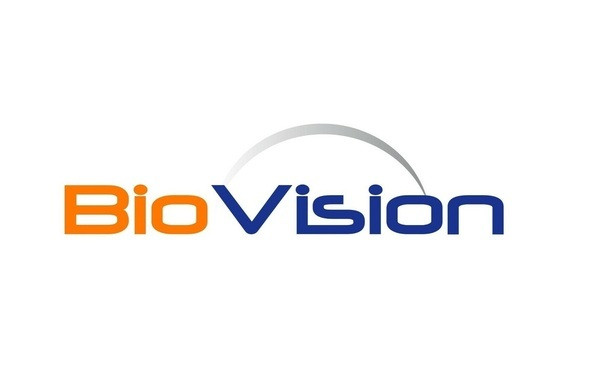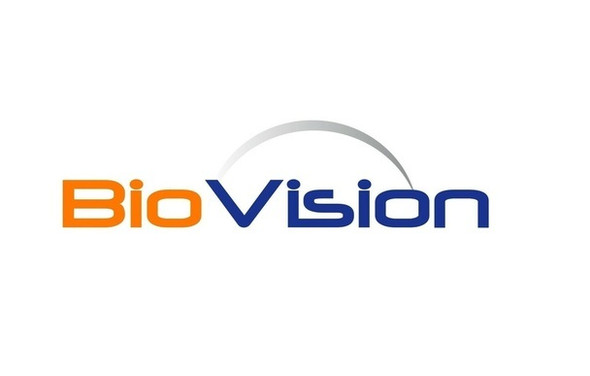Biovision
Human CellExp™ VLDLR, human recombinant
- SKU:
- 26-7464
- Availability:
- Usually Shipped in 5 Working Days
- Storage Temperature:
- -20°C
- Shipping Conditions:
- Gel Pack
- Shelf Life:
- 12 months
Description
Biomolecule/Target: VLDLR
Synonyms: VLDLR, CARMQ1, CHRMQ1, FLJ35024, VLDLRCH, VLDL-R, very-low-density-lipoprotein receptor
Alternates names: VLDLR, CARMQ1, CHRMQ1, FLJ35024, VLDLRCH, VLDL-R, very-low-density-lipoprotein receptor
Taglines: Plays a significant role in lipid metabolism and in nervous system development and function
Taglines: USA
Country of Animal Origin: USA
NCBI Gene ID #.: 7436
NCBI Gene Symbol: VLDLR
Gene Source: Human
Accession #: P98155
Recombinant: Yes
Source: HEK293 cells
Purity by SDS-PAGE #: ≥97%
Assay: SDS-PAGE
Purity: N/A
Assay #2: N/A
Endotoxin Level: <1 EU/μg by LAL method
Activity (Specifications/test method): N/A
Biological activity: Measured by its binding ability in a functional ELISA. When Recombinant Human Apolipoprotein E3 is immobilized at 1 μg/ml (100 μl/well), the concentration of Recombinant Human VLDLR that produces 50% of the optimal binding response is found to be approximately 0.03 - 0.15 μg/ml.
Results: Measured by its binding ability in a functional ELISA. When Recombinant Human Apolipoprotein E3 is immobilized at 1 μg/ml (100 μl/well), the concentration of Recombinant Human VLDLR that produces 50% of the optimal binding response is found to be approximately 0.03 - 0.15 μg/ml.
Binding Capacity: N/A
Unit Definition: N/A
Molecular Weight: This protein comprises 781 amino acids with polyhistidine tag at C-terminus and has a calculated MW of 86 kDa. The predicted N-terminus is Gly 28. DTT-reduced protein migrates as 150 & 180 kDa polypeptide in SDS-PAGE due to different glycosylation.
Concentration: N/A
Appearance: Lyophilized
Physical form description: Lyophilized from 0.22 μm filtered solution in PBS, pH 7.4. Normally Mannitol or Trehalose is added as protectants before lyophilization.
Reconstitution Instructions: Centrifuge the vial prior to opening. Reconstitute in sterile PBS, pH 7.4 to a concentration of 50 µg/ml. Do not vortex. This solution can be stored at 2-8°C for up to 1 month. For extended storage, it is recommended to store at -20°C.
Background Information: The very-low-density-lipoprotein receptor (VLDL-R) is a lipoprotein receptor that shows considerable similarity to the low density-lipoprotein receptor. VLDL R is a 130 kDa type I transmembrane protein in the LDL receptor family that plays a significant role in lipid metabolism and in nervous system development and function .This receptor has been suggested to be important for the metabolism of apoprotein-E-containing triacylglycerol-rich lipoproteins, such as very-low-density lipoprotein (VLDL), beta-migrating VLDL and intermediate-density lipoprotein. It is also one of the receptors of reelin, an extracellular matrix protein which regulates the processes of neuronal migration and synaptic plasticity. In humans, the VLDL-R is encoded by the VLDLR gene. A rare neurological disorder first described in the 1970s under the name "disequilibrium syndrome" is now considered to be caused by the disruption of VLDLR gene. The disorder was renamed VLDLR-associated cerebellar hypoplasia (VLDLRCH) after a 2005 study. It is associated with parental consanguinity and found in secluded communities such as the Hutterites. VLDLRCH is one of the two known genetic disorders caused by a disruption of reelin signaling pathway, along with Norman-Roberts syndrome.
Amino acid sequence: N/A
Handling: Centrifuge the vial prior to opening.
Usage: For Research Use Only! Not to be used in humans






